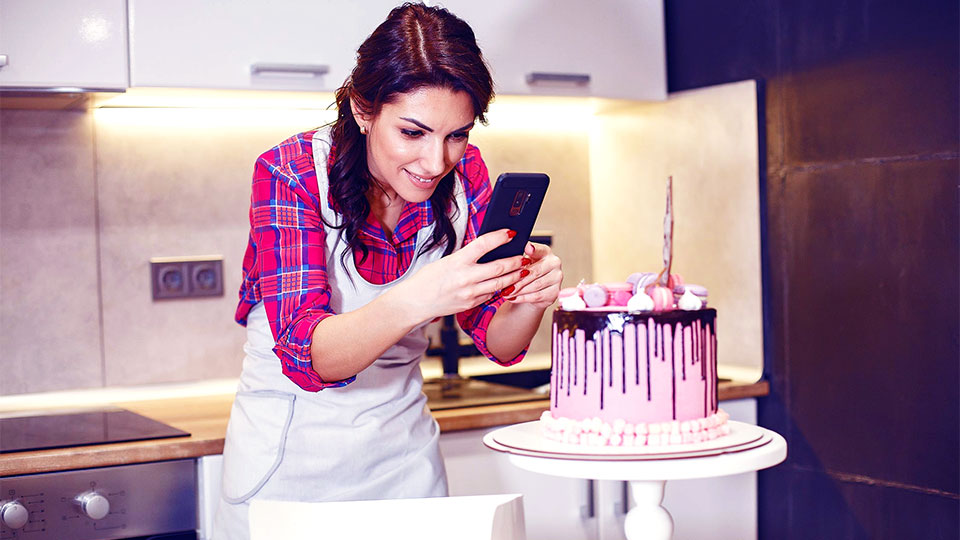
Smartphone manufacturers have been in a photography arms race over the last few years, upgrading their cameras with every model. Today the lenses mounted on handsets from Apple, Huawei and Samsung outstrip many point-and-shoot digital cameras and give even professional models a run for their money.
Think more megapixels for higher resolution images; more lenses so your camera can detect distance and focus on images better; and larger sensors for better quality photos in low light.
Here are the very best smartphones for photography, whether you’re snapping shots for your Instagram grid or commemorating family events.
1. iPhone 12 Pro Max
Apple’s latest, most deluxe iPhone model packs the best smartphone camera money can buy—but doesn’t come cheap (£1,099 and up).
All models in the iPhone 12 range have good cameras, with healthy megapixels, multiple lenses and Smart HDR 3, combining multiple exposures to create the best image possible.
But the Pro Max has been given an extra boost, with DSLR-like image stabilisation, better zoom on the telephoto lens and a large sensor that really shines in low light conditions.
It’s in those dim, shadowed conditions that the iPhone 12 Pro Max pulls far ahead of its stablemates—and competitors. Not only does it have a huge sensor, but it also boasts sensor-shift stabilisation, which applies stabilisation directly to that sensor, making for even crisper, more detailed low light shots.
Stabilisation also means the iPhone 12 Pro Max can take clean, steady long exposure shots, managing second-long exposures that even DSLR cameras can’t without a tripod.
The caveat is that these stunning features are primarily useful for professionals and may be lost on casual snappers and even hobbyists.
2. Samsung Galaxy Note 20 Ultra
You wouldn’t normally look to a “phablet” for a fantastic camera but the Galaxy Note 20 Ultra takes the best photos of any Samsung model. Samsung may talk up the 100x digital zoom on the S20 Ultra but that “Space Zoom” is tricky to use and amounts to little more than a gimmick. The S20 Ultra’s Note sister only zooms in 50x but is actually the better camera, with a wider aperture and larger pixels.
The telephoto lens might draw the headlines but Samsung hasn’t scrimped on the three other cameras, including the 108-megapixel main wide lens, the 12MP ultra-wide lens and the 10MP front-facing camera. Toggling between the rear and front-facing cameras is as easy as a swipe, thanks to a series of new intuitive gestures Samsung has introduced on its screen interface.
It doesn’t take low light photos as well as some rivals, but the Samsung Galaxy Note 20 Ultra is a fantastic device for photography. The only drawback is the Note is a little cumbersome for those with small hands, which makes steadying the shot difficult, especially when you’re using its digital zoom to its full capabilities.
3. Huawei P40 Pro
If you’re looking for something a little cheaper that still packs a major photography punch, consider the Huawei P40 Pro, a smartphone that nearly has night vision.
What makes the Huawei P40 Pro so good in dim light? Huawei says its the 50MP sensor and the RYYB (red yellow yellow blue) sub-pixel formation, and there’s also the massive sensor, optical image stabilisation and electronic image stabilisation.
The main camera boasts 40MP and there’s also a 12MP telephoto camera capable of 5x optical zoom or 50x digital zoom.
Photos taken on Huawei smartphone cameras have a distinctive look and some won’t like the bright colours. There’s also the squabble between Google and Huawei that means you won’t be able to get apps through the Play store. But if you can go without Google software, the P40 Pro is a great smartphone for photography.
4. Google Pixel 4
The cameras listed above are the very latest models to roll off the assembly lines and have eye-watering prices. If you’re looking for a much cheaper way into stunning smartphone photography, consider the Google Pixel 4, available for under £300.
The Google Pixel 4 was the company’s first phone to feature a rear dual-camera setup, which has become standard in higher tier smartphones. It doesn’t have the ultra-wide lens some smartphones boast, but its wide main camera and tele-lens are no slouches. The front camera replicates the specs of the main rear camera, so your selfies are as high-resolution and crisp as your tourist snaps.
It’s all backed up by optical image stabilisation, for sharp, in-focus images even if your hand shakes, and by Google’s stellar image processing.
5. iPhone 11
The Apple iPhone 11 has recently been outflanked by the iPhone 12 range but that means you can now snag a smartphone with a superb camera for a great price.
The 11 was the first iPhone to pack two cameras on the rear, doubling the lenses, doubling the sensors and effortlessly doubling your photography skills. One of them is an ultra-wide lens, capturing four times the scenery than previous iPhone models, including what’s just out of frame.
And it’s not just for panoramas. The iPhone 11 is also a great phone for portraiture: its smart HDR recognises faces and treats them differently than the rest of the shot, for more natural skin tones and a better play of shadow and highlights on faces. And because Apple clearly understands what we’re mostly taking photos of, the facial recognition works on pets as well.
 Samsung Galaxy J3 Pro
Samsung Galaxy J3 Pro  Samsung Galaxy S22 Ultra
Samsung Galaxy S22 Ultra  Samsung Galaxy A34
Samsung Galaxy A34  Samsung Galaxy A6
Samsung Galaxy A6  Apple iPhone 13 Pro Max
Apple iPhone 13 Pro Max  Samsung Galaxy S
Samsung Galaxy S 

